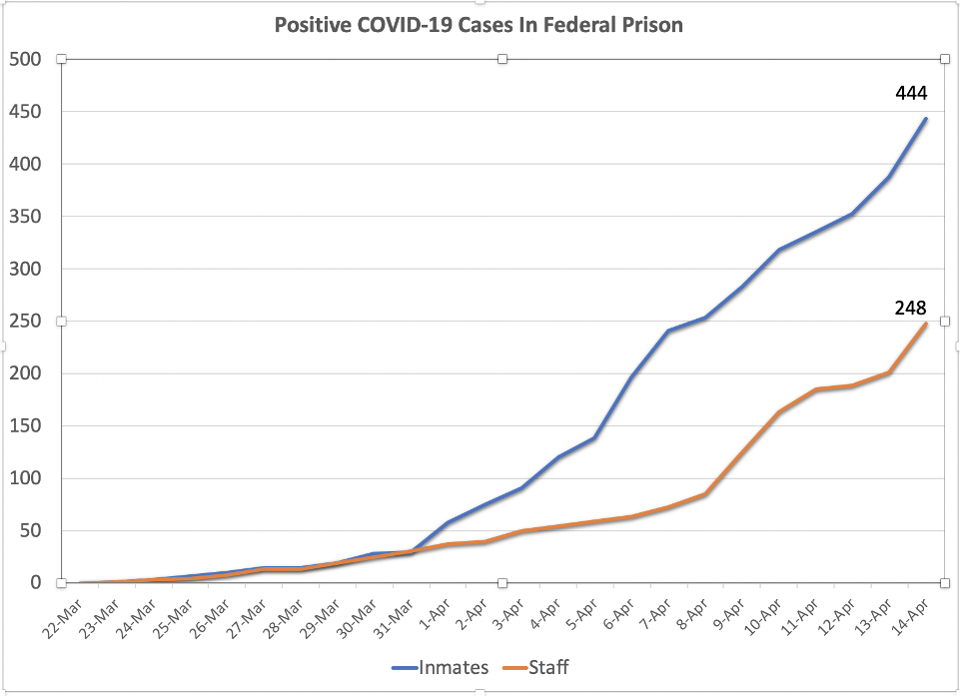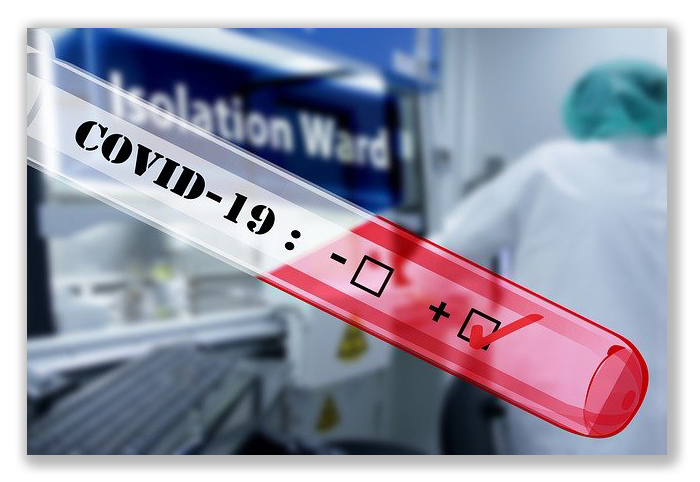We post news and comment on federal criminal justice issues, focused primarily on trial and post-conviction matters, legislative initiatives, and sentencing issues.

COVID-19 CURVE NOT FLATTENING IN BOP
The Federal Bureau of Prisons is now in “Phase 6” of its plan to curb the spread of COVID-19 among its 172,000 inmates housed in 122 institutions. Phase 6 (the BOP prefers the Roman-numeraled “Phase VI” for reasons as obscure as the NFL’s use of such numerals for Super Bowls) looks an awful lot like Phase V… it just lasts longer. This Phase (and the lockdowns) will last until May 18, 2020.

As Forbes magazine put it last Wednesday, “BOP’s efforts thus far have included halting social and legal visits since the middle of March, screening of inmates, staff and contractors by taking their temperature to measure infection, mobilizing administrative staff to step into front line positions, increase rate of hiring new corrections officers and halting staff training. The results have been tragic.”
As of Sunday night, there are 495 inmates (up 41% from last week) and 305 staff (up 61% from last week) ill with COVID-19 in 45 institutions (more than one-third of all BOP facilities). At least 22 inmates have died, the latest at FCI Terminal Island yesterday. Business Insider reported on Saturday that a BOP case manager from USP Atlanta died last week in her home of COVID-19.
The federal government’s COVID-19 strategy has been to “flatten the curve,” to spread out the spike in coronavirus cases so as not to overwhelm hospital capacity and resources. But, as Forbes notes, no
epidemiologists modeling the crisis ever envisioned the systemic failure that would expose 177,000 inmates housed in multiple institutional clusters, some numbering over 5,000 inmates, to a COVID-19 outbreak. These failures are resulting from a lack of a widespread testing protocol at institutions, the continued transfer of inmates between institutions, the introduction of new inmates who are either arrested or self-surrender and the thousands of staff and contractors that go in and out of these institutions.
The problem that has led to the continuing skyrocketing BOP COVID-19 cases is simple: the BOP has been unable or unwilling to test any inmates “except those who have died or are willing to risk fellow inmate retribution by revealing themselves to be symptomatic. Forbes reports that “more inmates are sick than the BOP is reporting and more inmates are not reporting that they are sick out of fear of being identified as sick.”
 This is probably so. As of Sunday night, for example, FCI Elkton reported 50 inmates sick with COVID-19. But last Friday, the BOP admitted in federal court that Elkton has 207 suspected inmate COVID-19 cases, but only had ever received 80 test kits. It has used 37, leaving only 43 on hand. It expects to receive an additional 25 kits a week for the next several weeks. “We have very, very limited amounts of the testing kits,” Brandy Moore, secretary treasurer of the national union that represents correctional officers in federal prisons, was quoted as saying by Mother Jones magazine last week.
This is probably so. As of Sunday night, for example, FCI Elkton reported 50 inmates sick with COVID-19. But last Friday, the BOP admitted in federal court that Elkton has 207 suspected inmate COVID-19 cases, but only had ever received 80 test kits. It has used 37, leaving only 43 on hand. It expects to receive an additional 25 kits a week for the next several weeks. “We have very, very limited amounts of the testing kits,” Brandy Moore, secretary treasurer of the national union that represents correctional officers in federal prisons, was quoted as saying by Mother Jones magazine last week.
At FCC Terre Haute, Indiana, “we have between 2,500 and 3,000 inmates, and we were given four tests,” Steve Markle, another leader of the national union who works at the prison, told Mother Jones in late March. At FCI Oakdale, correctional officers were told to stop testing people and just assume that anyone with symptoms had been infected, according to Ronald Morris, president of the local union there — even though, as shown by the Arkansas state prison experience we cited last Wednesday, plenty of people can be asymptomatic.
 All of this, Mother Jones reported, “is to say that statistics reported by the Federal Bureau of Prisons are likely massive undercounts. “Our numbers are not going to be adequate because we’re not truly testing them,” Moore said.
All of this, Mother Jones reported, “is to say that statistics reported by the Federal Bureau of Prisons are likely massive undercounts. “Our numbers are not going to be adequate because we’re not truly testing them,” Moore said.
Meanwhile, in a filing in the Eastern District of New York on April 9, the BOP admitted that “‘because of the shortage of tests, testing is currently reserved for those meeting’ certain criteria, including the kind of symptoms the inmate is facing, his potential exposure, whether he is high risk and whether he works in a high-contact role such as food service.” Through Thursday, April 16, the number of inmates tested at MCC New York and MDC Brooklyn has risen from 11 to 19. That is out of a combined population of over 2,300 inmates.
The ACLU has filed lawsuits in Louisiana against FCI Oakdale, Massachusetts against FMC Devens, and Ohio against FCI Elkton, seeking to compel release of more inmates because of the virus. “”Devens — one of only seven federal prison medical centers — is a powder keg of potential infection and death from COVID-19, to an even greater degree than nursing homes, cruise ships, and other prisons, sites of some of the most intense clusters of mortality in  Massachusetts, the United States, and elsewhere in the world,” the plaintiffs’ lawyers wrote in the District of Massachusetts complaint.
Massachusetts, the United States, and elsewhere in the world,” the plaintiffs’ lawyers wrote in the District of Massachusetts complaint.
“We’re dealing with it just as well as anybody else,” BOP Director Michael Carvajal told CNN a week ago, “and I’d be proud to say we’re doing pretty good.”
Forbes, Federal Bureau of Prisons Institutions Not Showing Any Signs of “Flattening Curve” (Apr 15)
Business Insider, The Federal Bureau of Prisons has confirmed the first staff death linked to the coronavirus, report says (Apr 18)
Wilson v. Williams, Case No. 4:20cv794 (N.D.Ohio), Supplement to Respondents’ Answer, Dkt. 19, filed Apr 18, 2020
New York Law Journal, Brooklyn Federal Lockup Officials Describe ‘Shortage of Tests’ in Newly Filed Documents (Apr 15)
CNN, Exclusive: ‘I don’t think anybody was ready for this Covid,’ says head of federal prisons (Apr 10)
– Thomas L. Root











 Even after passage of the
Even after passage of the 










